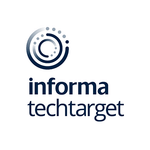Guide to Workplace Collaboration Tools
sponsored by Informa TechTarget
RESOURCE:
The secret is out about the benefits of using a cloud-based workplace collaboration tool, which companies rely on to increase employee productivity while in the midst of a content tsunami. Participate in our survey today for complete access to a printable chart, and start comparing 10 top cloud collaboration vendors & features for your company.
Posted: 08 Feb 2021 | Published: 12 Jun 2019

|

|
|
CW500: A roadmap to software-defined everything – Morgan Stanley
sponsored by TechTarget ComputerWeekly.com
ESSENTIAL GUIDE:
Computer Weekly's CW500 Club heard from IT leaders plotting a roadmap to software-defined everything – this presentation was given by Rob White, executive director of the global database group at Morgan Stanley.
Posted: 08 Feb 2021 | Published: 14 Oct 2016

|

|
|
Converged infrastructure in 2021: Next-generation datacentre designs
sponsored by TechTarget ComputerWeekly.com
EGUIDE:
In this e-guide: Simplifying the deployment and management of datacentre hardware systems is one of the main draws of converged and hyper-converged infrastructure setups for enterprises.
Posted: 26 Mar 2021 | Published: 26 Mar 2021

|

|
|
California Institute for Telecommunications and Information Technology (Calit2) Uses Kognitio WX2 for CAMERA Project
sponsored by Kognitio
CASE STUDY:
In this case study Calit2 and Cyberinfrastructure for Advanced Marine Microbial Ecology Research and Analysis (CAMERA) develop a cost-effective, high-performance environment where researchers have unlimited access to the existing genomics data.
Posted: 28 Jul 2008 | Published: 25 Jul 2008

|

|
|
How to Become an SOA Superhero
sponsored by IBM
BROCHURE:
This brochure shows how you can be a superhero by making WebSphere MQ the messaging backbone for your SOA, creating a common connection for the free flow of information.
Posted: 12 Feb 2009 | Published: 11 Feb 2009

|

|
|
Two Billion Entry Directory Benchmark
sponsored by Oracle Corporation
WHITE PAPER:
This benchmark evaluates Oracle Internet Directory performance under scales and throughput rates representative of those encountered in production use in both the communications industry and as part of large scale delivery architectures.
Posted: 10 Apr 2008 | Published: 01 Mar 2008

|

|
|
Optimizing the PC Segment of California's IT Infrastructure
sponsored by Intel Corporation
CASE STUDY:
Researchers found that by creating a dynamic IT environment- standardized, centralized, automated, and mobile-California can achieve a greener, more secure computing complex that improves productivity, delivering greater efficiency at a lower cost to taxpayers and the environment.
Posted: 27 May 2009 | Published: 27 May 2009

|

|
|
Increasing Business Performance: Using Virtualization for SAP Applications on IBM System p Servers
sponsored by IBM
WHITE PAPER:
This white paper captures the experiences of six large companies running SAP applications using IBM® System p™ virtualization.
Posted: 17 Jun 2008 | Published: 16 Jun 2010

|

|
|
Intel® Xeon® Processor 5500 Series: An Intelligent Approach to IT Challenges
sponsored by Hewlett Packard Company and Intel
WHITE PAPER:
As data centers reach the upper limits of their power and cooling capacity, efficiency has become the focus of extending the life of existing data centers and designing new ones. As part of these efforts, IT needs to refresh existing infrastructure with servers that deliver more performance and scalability, more efficiently. Read on to learn more.
Posted: 08 Jul 2009 | Published: 08 Jul 2009

|

|
|
System Recovery-Breaking through the Dissimilar Hardware Restore Challenge
sponsored by Symantec Corporation
WHITE PAPER:
This paper discusses how Symantec Backup Exec System Recovery Restore Anyware can dramatically change the way organizations perform a wide range of IT tasks, including bare-metal system recovery and restoration to dissimilar hardware.
Posted: 20 Mar 2008 | Published: 01 Dec 2007

|

|